Discover the variety of yarn weights as we unravel their unique characteristics, perfect for knitting and crocheting projects of all kinds.
Are you a yarn enthusiast who loves to crochet or knit? Have you ever wondered about the different types of yarn weight available in the market and how they affect your projects? Well, wonder no more! In this blog post, we will explore the various types of yarn weight, their characteristics, and their uses. Whether you’re a beginner or an experienced crafter, understanding yarn weight is essential for creating beautiful and functional pieces.
So grab your favorite cup of tea and let’s dive into the world of yarn weights!
Understanding Yarn Weights

Yarn weight is a crucial factor to consider when starting any knitting or crocheting project. It determines the thickness of the yarn, which in turn affects how your finished piece will look and feel.
Understanding yarn weights can be overwhelming at first, but it’s essential for choosing the right materials for your project.
In general, yarn weight refers to how thick or thin a strand of yarn is. The thicker the strand, the heavier its weight; conversely, thinner strands are lighter in weight.
Yarns come in different weights ranging from lace-weight (the thinnest) to jumbo-weight (the thickest). Each type has its unique characteristics that make them suitable for specific projects.
When selecting a particular type of yarn based on its thickness or “weight,” you’ll want to keep several factors in mind: what kind of item you’re making (e.g., sweater vs scarf), what stitch pattern you plan on using and whether drape matters more than structure etcetera.
How Is Yarn Measured?

The most common method used to measure yarn weight is wraps per inch (WPI). This involves wrapping a strand of yarn around a ruler or other measuring tool and counting how many times it wraps around in one inch.
The number of wraps per inch determines the weight category that the yarn falls into.
Another way to measure yarn weight is by using ply, which refers to how many strands are twisted together to make up one piece of thread. A single-ply means there’s only one strand, while two-ply means there are two strands twisted together.
It’s important for crafters to understand these measurements because they affect not only what hook or needle size you should use but also your gauge and ultimately your finished project’s look and feel.
What Determines the Weight of Yarn?

The thickness of the yarn refers to the diameter or width of each strand, while density refers to how tightly or loosely those strands are spun together. These two factors combined determine the overall weight and bulkiness of a particular type of yarn.
Thicker strands will result in heavier weights, while thinner strands will produce lighter weights. Similarly, tighter twists create denser yarns that weigh more than looser twists.
It’s important to note that different fibers can also affect the weight and texture of a particular type of yarn. For example, woolen fibers tend to be thicker than cotton fibers which means they produce heavier-weighted fabrics when spun into thread.
Yarn Weight Categories
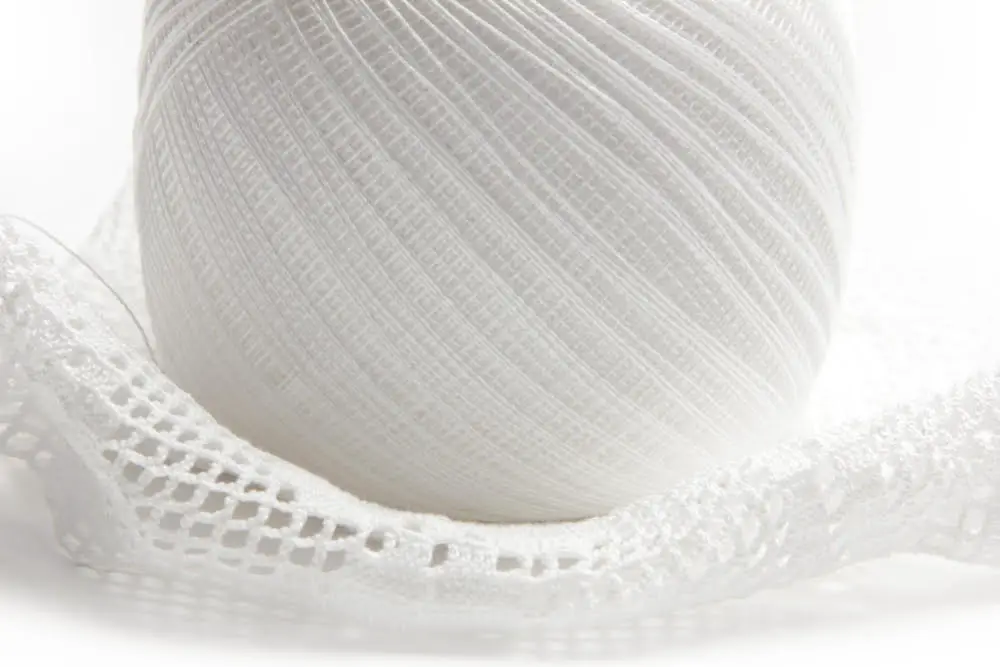
The Craft Yarn Council (CYC) has established seven main categories, ranging from lace to jumbo weight. Each category is determined by the thickness of the yarn and its recommended hook or needle size.
Lace weight yarn is incredibly thin and delicate, perfect for creating intricate lace patterns in shawls or doilies. Super fine weight yarns are slightly thicker than lace but still lightweight enough to create delicate garments like baby clothes or lacy scarves.
Fine-weighted yarns work well with small needles and hooks, making them ideal for detailed stitch work in sweaters, hats, gloves, socks and other accessories. Light-weighted ones can be used to make light blankets while medium weighted ones can be used on heavier blankets as well as clothing items such as cardigans.
Bulky-weighted ones produce quick results when crocheting larger items like afghans while super bulky weights create thick cozy fabrics suitable for winter wearables such as hats & scarfs. Jumbo weighted one produces extra-large stitches which makes it great choice if you want your project done quickly!
CYC Yarn Weight Standards
The CYC has established a system of eight categories to classify yarn by weight, ranging from lace weight to jumbo. Each category corresponds with specific guidelines for gauge and recommended needle or hook size.
Understanding the CYC Yarn Weight Standards can help you choose the right yarn for your project and ensure that your finished piece turns out as intended. By following these standards, you can achieve consistent results across different patterns and brands of yarn.
What Does Ply Mean?

The ply can affect the weight, texture, and appearance of the yarn. A single-ply yarn is made up of just one strand while a two-ply has two strands twisted together.
The ply can also affect how durable and strong your finished project will be. For example, a four-ply or higher is ideal for making socks as it provides more strength than a single or double-ply.
When choosing your yarn weight, it’s important to consider both its ply and thickness (measured in WPI). These factors will determine how much yardage you’ll need for your project as well as what hook or needle size you should use.
How Does Ply Affect Yarn Weight?
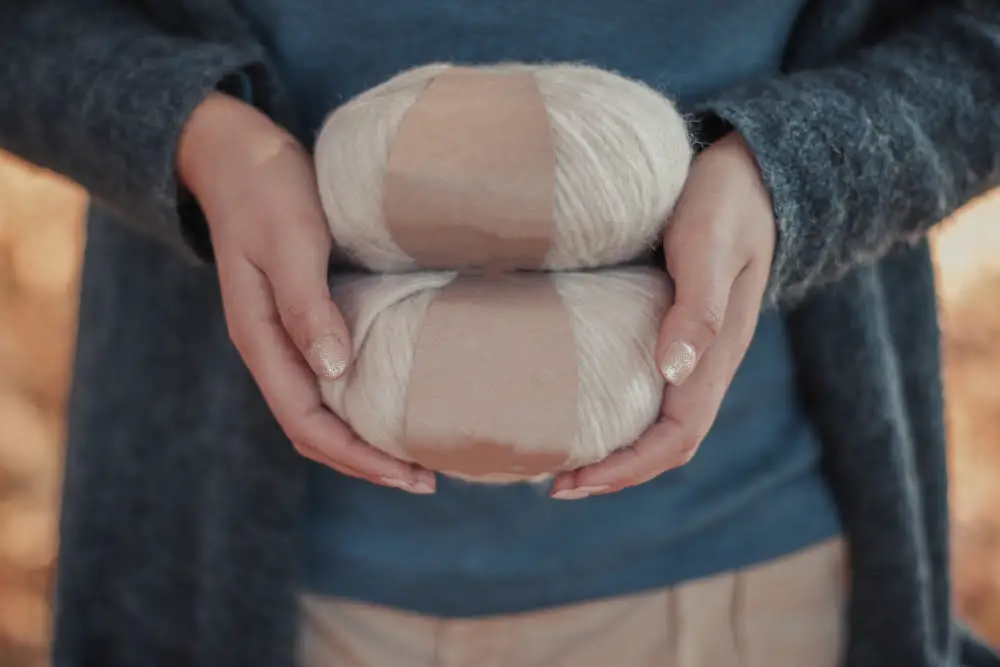
The ply can affect the weight, thickness, and texture of the yarn. Generally speaking, more plies mean a heavier and thicker yarn.
For example, two-ply or three-ply yarn is typically lighter than four-ply or six-ply yarn. This is because there are fewer individual strands in each ply that contribute to its overall weight.
However, it’s important to note that not all plies are created equal – some may be thinner or thicker than others depending on their composition and twist. Different fibers may behave differently when spun into multiple plies.
When choosing a ply for your project, consider how it will affect both the weight and texture of your finished piece. A higher ply count can add durability but also bulkiness while lower counts create drapey fabrics with less structure.
What Is WPI (Wraps Per Inch)?

It’s an easy and quick way to determine the yarn weight if you don’t have a gauge or label available. To measure WPI, wrap your yarn around a ruler in parallel lines until you reach one inch.
Count how many times the yarn wraps around within that inch and use this number to identify its corresponding category on the standard Yarn Weight System.
Knowing your WPI can help ensure that you choose appropriate hook or needle sizes for your project as well as estimate yardage requirements accurately. Keep in mind that different fibers may have varying densities even with similar WPI measurements, so it’s still best to swatch before starting any project.
Ply Vs. WPI

Ply refers to the number of strands twisted together to make a single strand of yarn. For example, a 2-ply yarn is made up of two strands twisted together.
On the other hand, WPI measures how many times you can wrap your yarn around an inch-long ruler or tool.
While both ply and WPI can give you an idea about the thickness or weight of your yarn, they don’t always correlate with each other. A high-ply count doesn’t necessarily mean that a particular type of yarn is thicker than another with fewer plies.
For instance, lace-weight wool might be four-plied while bulky cotton could be only one-plied but still have more volume due to its fiber content and construction method.
Gauge

It refers to the number of stitches and rows per inch that you achieve when working with a particular yarn weight, hook size, and needle size. The gauge determines the overall size of your finished piece, so it’s crucial to get it right.
To determine your gauge accurately, make a swatch using the same yarn weight and hook/needle size as specified in your pattern. Measure how many stitches and rows you have per inch by counting them within a 4-inch square area.
If your gauge doesn’t match what’s indicated in the pattern instructions, adjust accordingly by changing either your hook/needle size or tension until you reach the correct measurements.
Remember that even small differences in gauge can significantly affect how much yarn you’ll need for a project or its final dimensions. So take time to check before starting on any new projects!
Making Multiples
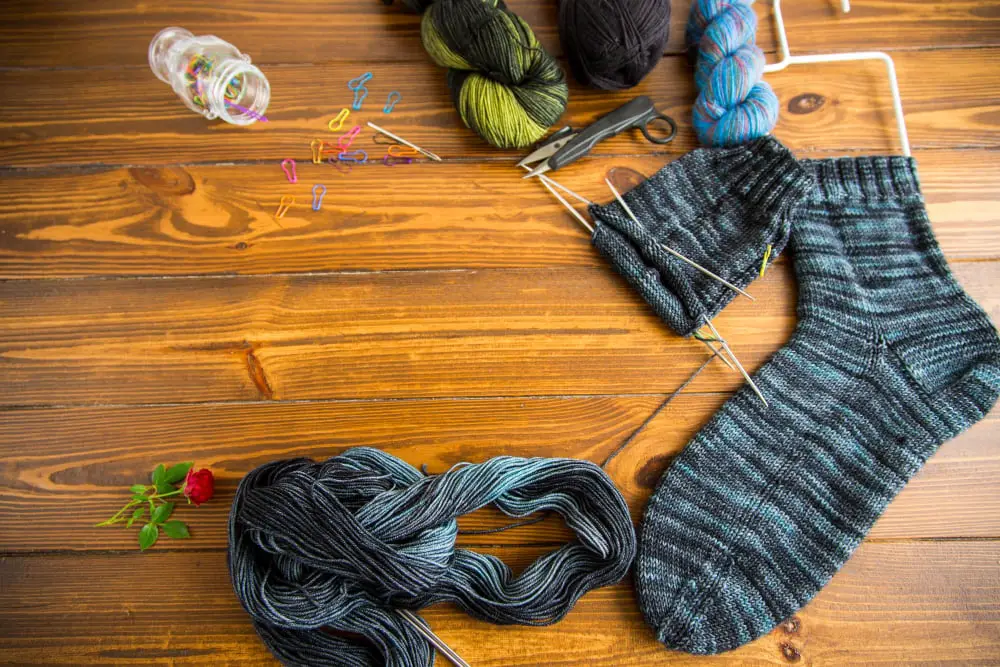
Whether you’re creating a set of coasters or knitting socks for the whole family, understanding how to make multiples is essential. The key to success lies in choosing the right yarn weight and hook or needle size for your project.
To ensure consistency in your work, start by measuring your gauge before beginning any project that requires multiple pieces. This will help you determine if you need to adjust your hook or needle size and ensure that all of the pieces are uniform in size.
Another important factor when making multiples is keeping track of each piece as you go along. It’s easy to lose count when working on multiple projects at once, so consider using stitch markers or other tools to keep track of where you are in each piece.
Be patient with yourself! Making multiples can be time-consuming but taking breaks often helps prevent burnout and ensures that every piece receives equal attention from start-to-finish.
Lace Weight Yarn

It is often used to create lace patterns, shawls, and other lightweight garments. Lace weight yarn typically has a gauge of 8 or more stitches per inch on US size 0-3 needles.
Despite its thinness, lace weight yarn can be made from a variety of fibers such as wool, silk or cotton. The fiber content affects the drape and texture of the finished project.
When working with lace weight yarns it’s important to use smaller hooks or needles than you would with thicker weights in order to achieve an even tension throughout your work. Due to its fineness handling this type of thread requires patience but once mastered can produce stunning results that are worth every stitch!
Super Fine Yarn

It is also known as Fingering or Baby Weight Yarn and has a recommended gauge of 27-32 stitches per four inches. This type of yarn weight produces delicate, lightweight fabrics that are perfect for baby clothes, shawls, socks, and other intricate projects.
Super Fine Yarns come in a variety of fibers such as wool, cotton, silk blends or synthetic materials like nylon and acrylic. They can be solid-colored or variegated with different shades to create unique patterns.
When working with Super Fine Yarns it’s important to use smaller needles (US size 1-3) to achieve the correct gauge for your project. Due to its thinness handling this type of yarn may require some practice but once you get used to it you’ll love how soft and dainty your finished piece looks!
Fine Yarn

It’s lightweight, delicate, and perfect for creating intricate designs. Fine yarn typically falls under the category of “fingering weight” or “baby weight,” with a recommended gauge of 27-32 stitches per four inches on US size 1-3 needles.
This type of yarn is ideal for making shawls, scarves, socks, gloves/mittens as well as baby clothes because it creates soft and dainty pieces that are comfortable to wear against the skin. The fine texture also allows you to create more detailed patterns without adding bulkiness to your project.
When working with fine yarns like this one it’s important to choose appropriate hook or needle sizes so that your finished piece has an even tension throughout. You may need smaller hooks/needles than what you would use when working with heavier weights in order not make too loose stitches which can affect the overall look of your work.
Light Yarn

It’s slightly thicker than Fine or Sport Weight yarn but thinner than Medium or Worsted Weight yarn. Light Yarn is perfect for creating lightweight garments such as shawls, scarves, and baby clothes.
One of the advantages of using Light Yarn is that it creates a delicate drape in your finished project. This makes it an excellent choice for creating lacy patterns that require some flexibility to show off their intricate designs.
When working with Light Yarns, you’ll want to use smaller needles or hooks compared to those used with heavier weights of yarn. This will help create tighter stitches which are essential when working on more detailed patterns like cables and lacework.
Some popular brands of light-weighted yarn include Cascade 220 Superwash Sport Multis , Berroco Vintage DK , Lion Brand Vanna’s Style. These brands offer a wide range of colors suitable for any project you have in mind!
Medium Yarn
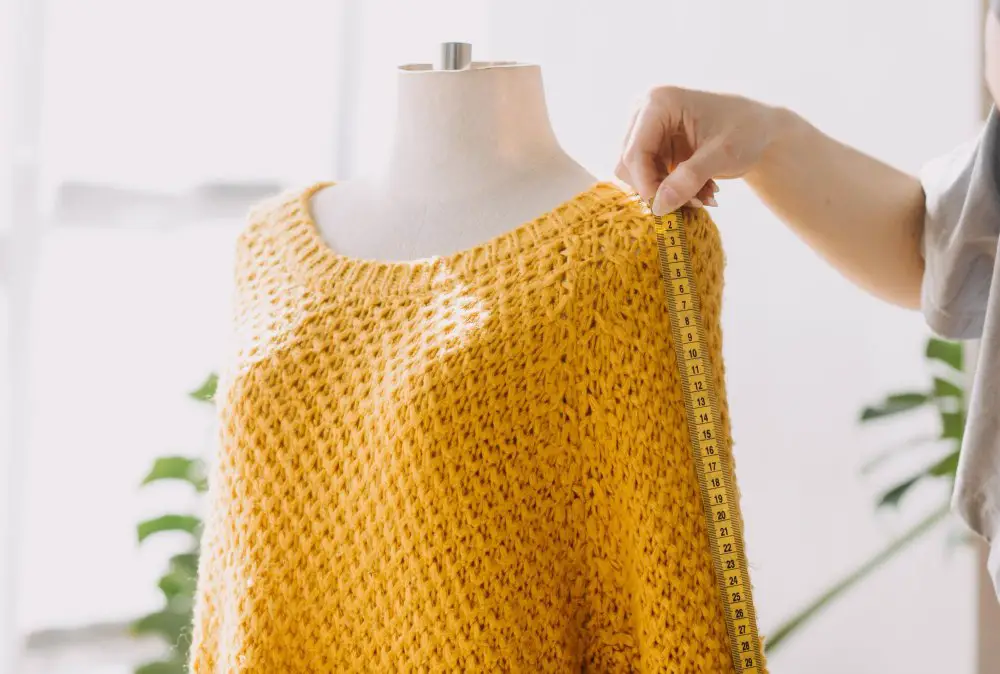
It’s versatile and can be used for a wide range of projects such as blankets, scarves, hats and even sweaters. Medium-weight yarns are thicker than fine or sport-weight but thinner than bulky or super-bulky ones.
Worsted weight is often considered the go-to choice for many knitting and crochet patterns because it works up quickly without being too heavy or cumbersome to handle. This makes it an ideal choice for beginners who want to create something that looks impressive without having to spend months working on it.
When choosing medium-weight yarns, keep in mind that they come in different fiber contents such as wool blends (which tend to be warm), cotton blends (which are great for summer garments) and acrylic blends (which offer durability). Also note that some brands may have slight variations in their worsted weights so always check your gauge before starting any project.
Bulky Yarn

Bulky weight yarns are thicker than medium weight (worsted) but not as thick as super bulky or jumbo. They typically have a gauge of 12-15 stitches per four inches on size US 9-11 needles.
Bulky weight yarns come in various fibers such as wool, acrylic, cotton blends and more. They are ideal for making winter accessories like hats and scarves because they provide warmth without being too heavy or cumbersome to wear.
When working with bulky yarns it’s important to choose the right hook or needle size so that your project doesn’t end up too tight or loose. It’s also essential to check your gauge before starting any project since different brands may vary slightly in thickness even if they share the same category of “bulky” weight.
Super Bulky Yarn

It’s perfect for creating warm and cozy projects like blankets, scarves, hats, and sweaters. This type of yarn is also known as jumbo or roving yarn because it has a thick and fluffy texture that resembles unspun wool roving.
Super bulky yarns are usually made from natural fibers like wool or alpaca but can also be synthetic blends with acrylic or nylon to add durability. Due to its thickness, super bulky yarn works up quickly on large needles or hooks making it an ideal choice for last-minute gifts.
When working with super bulky yarns, keep in mind that they require fewer stitches per inch than lighter weight options; therefore you’ll need less yardage overall compared to other weights when making your project. Due to their bulkiness handling them may take some getting used too especially if you’re new at crocheting/knitting.
Jumbo Yarn
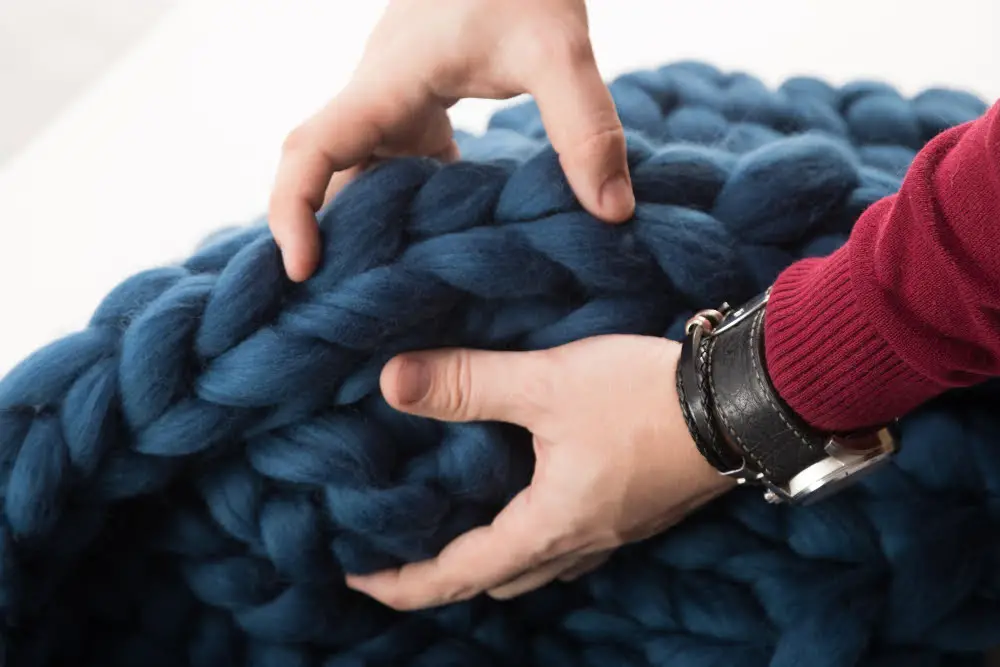
Jumbo weight yarns are thick and bulky, making them ideal for creating warm blankets, scarves, hats or even home decor items like poufs or rugs. They are also great for arm knitting as they provide instant gratification with their large stitches.
Jumbo weight yarns usually have a gauge of 1-2 stitches per inch on size 25mm (US50) needles or larger. Due to their thickness and loftiness, they work up quickly but require fewer yards than other weights to complete a project.
When working with jumbo weight yarns it’s important to choose the right needle size so that your finished piece has an appropriate drape without being too stiff. It’s also essential to check your gauge before starting any project as it will help ensure that you get the correct measurements in your final product.
Novelty Yarns

These types of yarns come in a wide range of styles, from fluffy eyelash yarns to ribbon-like tape yarns. Novelty yarn can be made from various materials such as wool, acrylic fibers or even recycled plastic bottles.
One popular type of novelty yarn is boucle. Boucle has loops that create an interesting texture when knitted up into fabric.
It’s perfect for creating cozy scarves and shawls.
Another type is chenille which has a velvety feel due to its short pile fibers that give it the appearance of velvet fabric when woven together.
Ribbon Yarn is another unique novelty option with flat strips resembling ribbons sewn together side by side giving it an unusual look compared with traditional round-shaped strands. While these types of specialty threads may seem intimidating at first glance because they don’t behave like regular smooth-textured ones; once you get used them they can be quite easy (and fun!) to work with!
FAQ
What are the different yarn weights?
Answer: Yarn weights are categorized into 8 classifications: 0-Lace, 1-Super Fine, 2-Fine, 3-Light, 4-Medium, 5-Bulky, 6-Super Bulky, and 7-Jumbo.
What is 3 or 4 weight yarn?
3 or 4 weight yarn refers to Light (DK, Light Worsted) and Medium (Worsted, Afghan, Aran) yarns, which are used for garments, heavier baby items, and as the most frequently used yarn weight, respectively.
What is 4 weight vs 5 weight yarn?
Answer: 4 weight yarn refers to medium types like worsted, afghan, and aran, while 5 weight yarn refers to bulky types such as chunky, craft, and rug.
What is #2 weight yarn?
Answer: #2 weight yarn is a fine, lightweight yarn ideal for knitting, crocheting, and weaving projects such as socks, baby items, accessories, and garments.
How do you choose the appropriate yarn weight for a specific project?
To choose the appropriate yarn weight for a specific project, consider factors such as desired fabric texture, stitch definition, and project type, as well as personal preference and pattern recommendations.
Can you mix different yarn weights in a single project?
Yes, mixing different yarn weights in a single project is possible, but it can result in varied fabric texture and gauge.
How does yarn weight affect the texture and drape of a finished piece?
Yarn weight significantly influences the texture and drape of a finished piece, with lighter weights producing a finer texture and more fluid drape, while heavier weights yield a thicker texture and stiffer drape.
